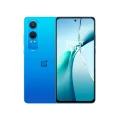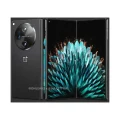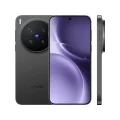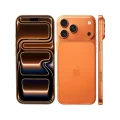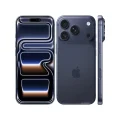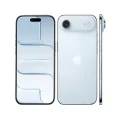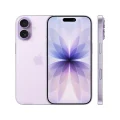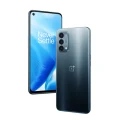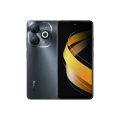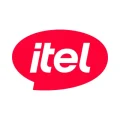- Home
- All Products
- OnePlus
- OnePlus 7 Pro
OnePlus 7 Pro
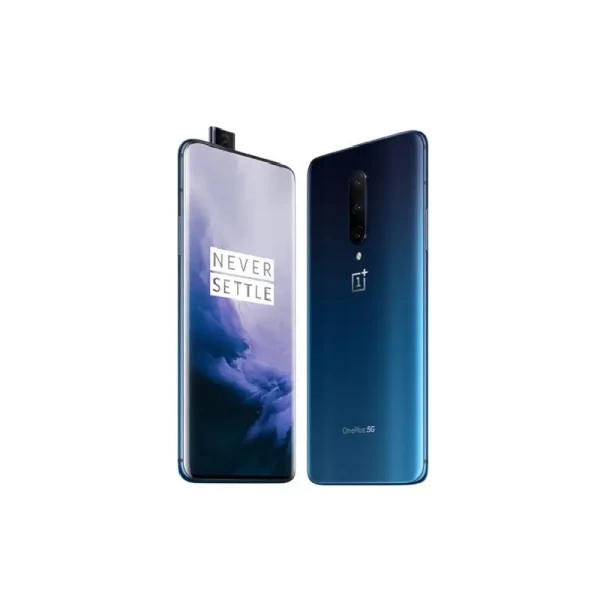

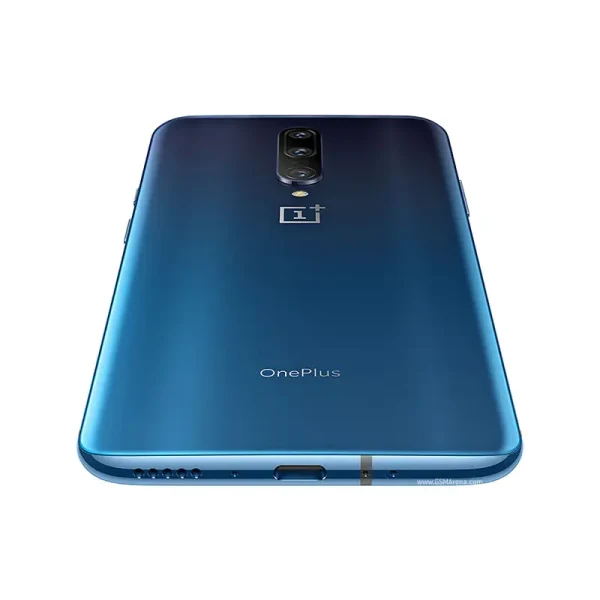

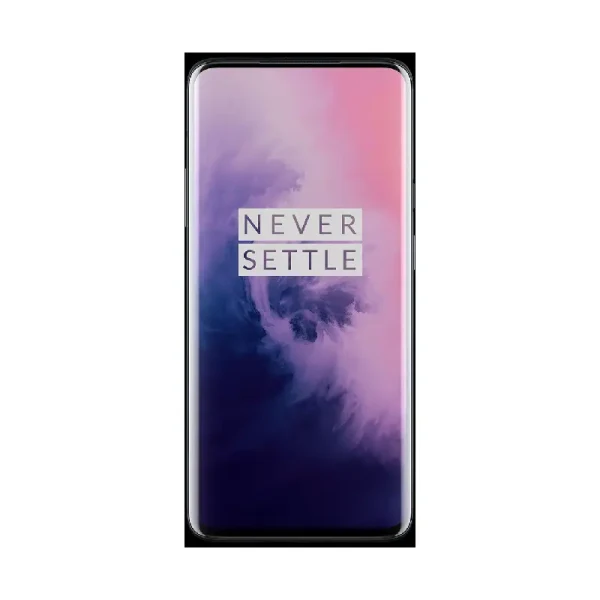
-
Battery: Li-Po 4000 mAh
-
RAM: 6GB, 8GB, 12GB
-
Storage: 128GB, 256GB, 256GB
-
Display: Fluid AMOLED, 6.67 inches
-
Camera: Rear 48 MP+8 MP+16 MP, and Front 16 MP
-
OS: Android 9.0 (Pie), upgradable to Android 12, OxygenOS 12.1
Full Specifications
Price
| Official | 68990 BDT 8GB/128GB, 72990 BDT 8GB/256GB, 79990 BDT 12GB/256GB |
General
| Model | OnePlus 7 Pro |
| Announced | 2019, May 14 |
| Released | 2019, May 16 |
| Status | Available |
Design
| Dimensions | 162.6 x 75.9 x 8.8 mm (6.40 x 2.99 x 0.35 in) |
| Weight | 206 g (7.27 oz) |
| SIM SIM (Subscriber Identity Module) is a small card that contains mobile network subscriber's account information. This allows the phone using the card to attach to a mobile network. The SIM card is most commonly associated with GSM and UMTS mobile networks. Moving a SIM card from one phone to another allows a subscriber to switch mobile phones without having to contact their mobile network carrier. SIM cards can also be used by a phone to store limited amounts of data, such as phone numbers and text messages. |
Dual SIM (Nano-SIM, dual stand-by) |
| Colors |
Mirror Grey, Almond, Nebula Blue |
Display Specification
| Display Type Display Technology => A number of display technologies and types used in mobile phones => TFT (Thin Film Transistor), IPS (In-Place Switching), OLED (Organic Light Emitting Diode), AMOLED (Active-Matrix Organic Light-Emitting Diode), Super AMOLED (an even advanced version of AMOLED), Resistive Touchscreen (Resistive touchscreens contain two layer of conductive material with a very small gap between them which acts as a resistance), Capacitive Touchsceen (Capacitive touchscreen technology consists of a layer of glass coated with a transparent conductor) | Fluid AMOLED |
| Size | 6.67 inches, 108.8 cm2 |
| Resolution | 1440 x 3120 pixels, 19.5:9 ratio |
| Refresh Rate | 90Hz |
| Pixel Density Pixel Density (PPI) is refers to the concentration of pixels on a particular display, measured in pixels per inch (ppi). Pixel density is calculated by dividing the diagonal pixel resolution of a display by its diagonal size, higher pixel density better display quality. | 516 ppi density |
| Display Protection Display Protection => Gorilla Glass is a special alkali-aluminosilicate glass shield with exceptional damage resistance that helps protect mobile displays from scratches, drops, and bumps of everyday use, It is always better to go for a smartphone with Gorilla Glass for that added protection and peace of mind. | Corning Gorilla Glass 5 |
| Features |
HDR10+ 88.1% screen-to-body ratio |
Platform
| Operating System OS => Every computer system run on a base software called Operating System (OS). Operating System controls all basic operations of the computer (such as smartphone, PDAs, tablet computers and other handheld devices). The Operating System allows the user to install and run third party applications (apps), apps are used to add new functionality to the device. | Android 9.0 (Pie), upgradable to Android 12, OxygenOS 12.1 |
| Chipset Chipset is a group of integrated circuits designed to perform one or a more dedicated functions, often with real time computing constraints, Popular smartphones are equipped with more advanced embedded chipsets that can do many different tasks depending on their programming. | Qualcomm SM8150 Snapdragon 855 (7 nm) |
| CPU CPU (Central Processing Unit) mostly known as processors, CPU processes instructions in order to carry out certain functions that make your device operate properly. Processors are often described as the brain of computers, smartphones and tablets, Smartphones and tablets rely on processors to carry out their every task, Processors are an incredibly important factor in selecting any type of computing device, including your smartphone. | Octa-core (1x2.84 GHz Kryo 485 & 3x2.42 GHz Kryo 485 & 4x1.78 GHz Kryo 485) |
| GPU GPU (Graphics Processing Unit) is a single-chip processor designed to rapidly manipulate and alter memory to accelerate the creation of images in a frame buffer intended for output to a display, This includes things such as lighting effects, object transformations, and 3D motion. | Adreno 640 |
Main Camera
| Camera Setup | Triple |
| Resolution |
48 MP, f/1.6, (wide), 1/2.0", 0.8µm, PDAF, Laser AF, OIS 8 MP, f/2.4, 78mm (telephoto), 3x optical zoom, PDAF, OIS 16 MP, f/2.2, 17mm (ultrawide), AF |
| Features |
Dual-LED flash, panorama, HDR |
| Video | 4K@30/60fps, 1080p@30/60/240fps, 720p@480fps, Auto HDR, gyro-EIS, no video rec. with ultrawide camera |
Selfie Camera
| Camera Setup | Single |
| Resolution |
Motorized pop-up 16 MP, f/2.0, 25mm (wide), 1/3.06", 1.0µm |
| Video | 1080p@30fps, gyro-EIS |
| Features |
Auto-HDR |
Network & Connectivity
| Technology | GSM / CDMA / HSPA / LTE |
| Speed | HSPA 42.2/5.76 Mbps, LTE-A (5CA) Cat18 1200/150 Mbps |
| Wi-fi Wi-Fi is a popular wireless networking technology using radio waves to provide high-speed network connections that allows devices to communicate without cords or cables, Wi-Fi is increasingly becoming the preferred mode of internet connectivity all over the world. | Wi-Fi 802.11 a/b/g/n/ac, dual-band, Wi-Fi Direct, DLNA |
| Bluetooth Bluetooth is a wireless communications technology for exchanging data between mobile phones, headsets, computers and other network devices over short distances without wires, Bluetooth technology was primarily designed to support simple wireless networking of personal consumer devices. | 5.0, A2DP, LE, aptX HD |
| NFC NFC (Near field communication) is a set of standards for smartphones and similar devices to establish peer-to-peer radio communications with each other by touching them together or bringing them into proximity, usually no more than a few inches. | Yes |
| Positioning |
GPS (L1+L5), GLONASS (G1), BDS (B1), GALILEO (E1+E5a) |
| FM Radio | No |
| USB | USB Type-C 3.1, OTG |
| 2G Network |
GSM 850 / 900 / 1800 / 1900 - SIM 1 & SIM 2 CDMA 800 / 1900 & TD-SCDMA |
| 3G Network |
HSDPA 800 / 850 / 900 / 1700(AWS) / 1800 / 1900 / 2100 |
| 4G Network |
1, 2, 3, 4, 5, 7, 8, 12, 13, 17, 18, 19, 20, 25, 26, 28, 29, 32, 34, 38, 39, 40, 41, 66 - Global 1, 2, 3, 4, 5, 7, 8, 12, 13, 17, 18, 19, 20, 25, 26, 28, 29, 32, 34, 38, 39, 41, 46, 48, 66, 71 - North America |
Battery
| Battery Type Battery Type => Cell phones run on various kinds of batteries depending on the manufacturer, phone size or shape and features. There are basically four types of cell phone batteries => Lithium Polymer, Lithium Ion, Nickel Metal Hydride and Nickel Cadmium. | Li-Poly (Lithium Polymer) |
| Capacity Battery Capacity is a measure (typically in Amp-hr) of the charge stored by the battery, and is determined by the mass of active material contained in the battery. The battery capacity represents the maximum amount of energy that can be extracted from the battery under certain conditions. | 4000 mAh |
| Removable | No |
| Charging |
30W wired |
| Wireless Charging Wireless Charging (Inductive Charging) uses an electromagnetic field to transfer energy between two objects. This is usually done with a charging station. Energy is sent through an inductive coupling to an electrical device, which can then use that energy to charge batteries or run the device. | No |
Multimedia
| Loudspeaker | Yes, with stereo speakers |
| Audio Jack | No |
Storage
| Card Slot Memory Card Slot is a special slot for inserting a memory card. Memory cards allow you to expand the phone's built-in memory, A memory card (sometimes called a flash memory card or a storage card) is a small storage medium used to store data such as text, pictures, audio, and video, for use on small, portable or remote computing devices such as mobile phones, mp3 players, digital cameras. | No |
| Internal Storage Internal Storage is a data storage space (flash memory) mostly used in smartphones, tablets and other electronic devices where operating system, apps, music, photos, videos, files and other user data Is stored. |
128GB 6GB RAM, 256GB 8GB RAM, 256GB 12GB RAM UFS 3.0 |
Sensors
| Fingerprint | Yes (under display, optical) |
| Other Sensors | accelerometer, gyro, compass, Virtual proximity sensing |
About the OnePlus 7 Pro
The OnePlus 7 Pro, launched in May 2019, marked a huge leap forward for OnePlus as it entered the premium flagship market with top-of-the-line features. It stood out with its 6.67-inch Fluid AMOLED QHD+ display offering a 90Hz refresh rate and HDR10+ support, making it one of the smoothest and most immersive screens of its time. The display is curved and nearly bezel-less, thanks to the pop-up 16MP front camera, giving users a true full-screen experience. Under the hood, the OnePlus 7 Pro is powered by the Qualcomm Snapdragon 855 processor, paired with 6GB/8GB/12GB RAM and 128GB/256GB UFS 3.0 storage. This combination ensures blazing-fast performance, seamless multitasking, and quick app loading. The phone features a triple rear camera system with a 48MP Sony IMX586 main sensor, 16MP ultra-wide, and 8MP telephoto lens with 3x optical zoom, providing versatile photography options. The 4,000mAh battery supports Warp Charge 30 (30W fast charging), delivering a day’s power in just half an hour. OxygenOS based on Android 9 Pie (upgradable to Android 12) ensures a clean, smooth, and customizable user experience. Its premium glass design with an aluminum frame makes it stylish and durable, though it lacks wireless charging and an official IP rating. Overall, the OnePlus 7 Pro was a game-changer, combining flagship-grade performance, a stunning 90Hz display, and a premium design at a lower price compared to competitors like Samsung and Apple.
Main Key Features
- Display: 6.67-inch QHD+ Fluid AMOLED, 90Hz, HDR10+
- Processor: Qualcomm Snapdragon 855
- RAM & Storage: 6GB/8GB/12GB RAM, 128GB/256GB UFS 3.0 storage
- Cameras: 48MP + 16MP ultra-wide + 8MP telephoto, 16MP pop-up selfie
- Battery: 4,000mAh with Warp Charge 30
- OS: OxygenOS on Android 9 Pie (upgradeable to Android 12)
- Build: Glass front/back, aluminum frame
- Security: In-display fingerprint sensor + Face Unlock
Pros & Cons
Pros:
- Stunning 90Hz Fluid AMOLED QHD+ display
- Powerful Snapdragon 855 with UFS 3.0 storage
- Versatile triple-camera setup with telephoto & ultra-wide
- Premium design with bezel-less screen and pop-up camera
- Warp Charge 30 offers super-fast charging
Cons:
- No wireless charging
- No official water resistance rating
- Slightly bulky and heavy (206g)
- Pop-up camera raises durability concerns
Why Choose the OnePlus 7 Pro?
Choose the OnePlus 7 Pro if you want a premium smartphone experience with a silky-smooth 90Hz display, powerful performance, and a versatile camera system. It’s ideal for gamers, media lovers, and users seeking flagship features at a more affordable price than Samsung or Apple flagships.
Opinion
The OnePlus 7 Pro was a milestone device for OnePlus, proving that the brand could compete in the ultra-premium segment. Its display, speed, and design were ahead of many rivals in 2019. Even in 2025, it remains a capable device, though modern features like 5G, wireless charging, and higher refresh rate displays make newer phones more appealing. Still, it stands as one of OnePlus’s most iconic models.
See Another Model:
FAQs about OnePlus 7 Pro
Q: Does the OnePlus 7 Pro support 5G?
A: No, it only supports 4G LTE.
Q: What is special about its display?
A: It has a 6.67-inch QHD+ Fluid AMOLED display with 90Hz refresh rate and HDR10+.
Q: Which Android version does it support?
A: It launched with Android 9 Pie and is officially upgradeable to Android 12.
Q: Does the OnePlus 7 Pro have wireless charging?
A: No, it only supports Warp Charge 30 wired fast charging.
Q: Is the pop-up selfie camera durable?
A: Yes, it is motorized and tested for durability, but long-term use may raise concerns compared to fixed cameras.
Give Your Review
Disclaimer Note
You can write your own disclaimer from APS Settings -> General -> Disclaimer Note.
